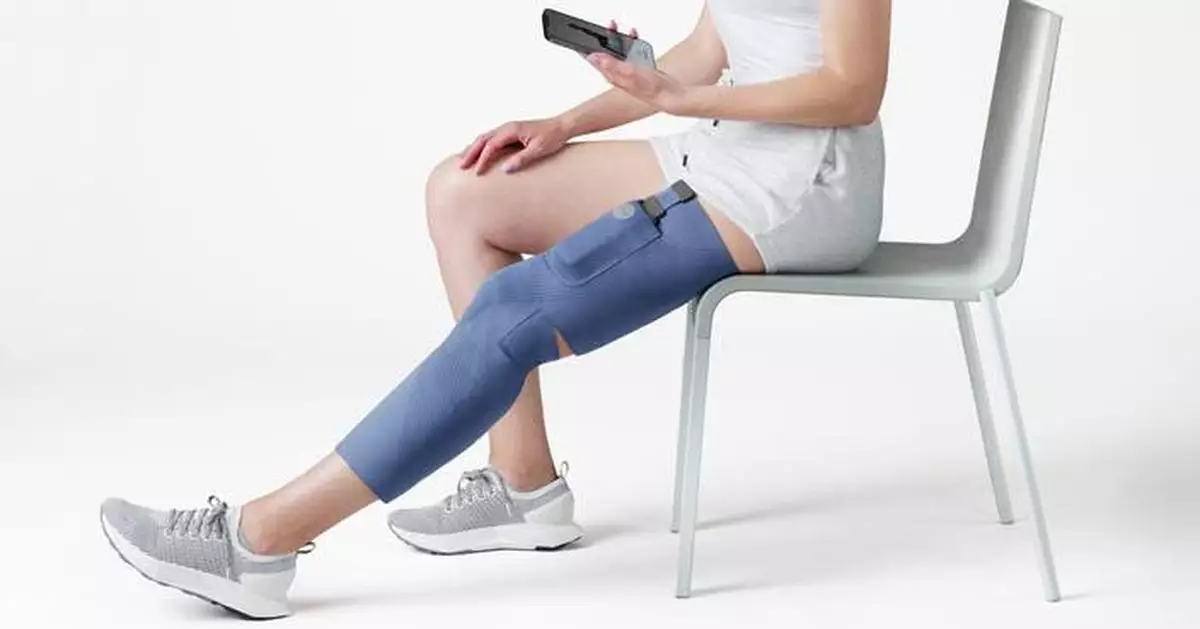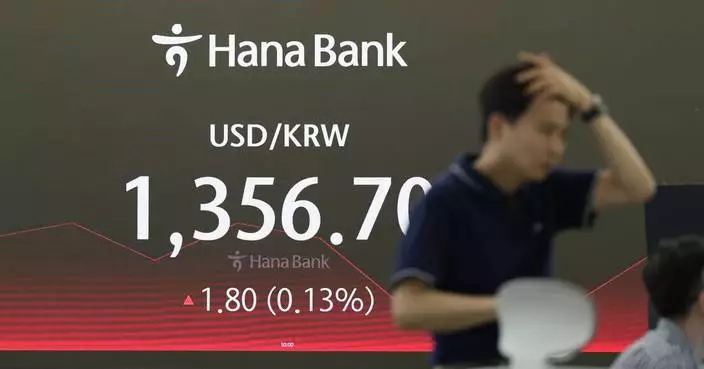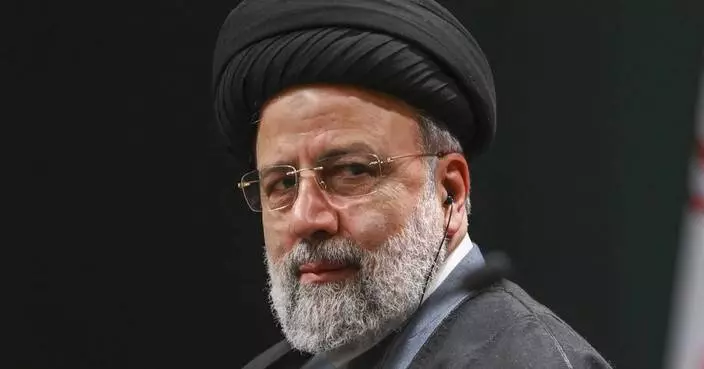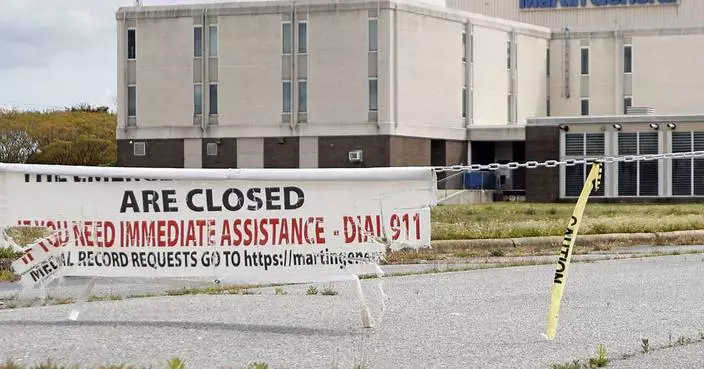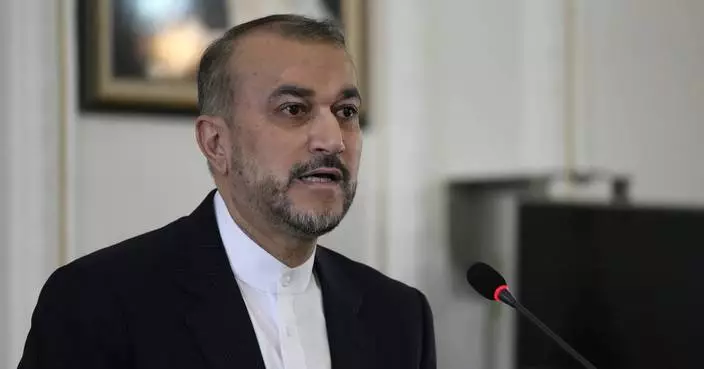SAN FRANCISCO--(BUSINESS WIRE)--May 9, 2024--
CIONIC, the neurotech inventor of FDA-cleared bionic clothing to improve walking, strength, and overall mobility, announced significant updates to the Cionic Neural Sleeve experience in its latest software release. The durable leg sleeve is transforming how device-based therapeutics are assisting patients with multiple sclerosis, strokes, spinal cord injuries, and other upper motor neuron diagnoses. The updates include comprehensive progress tracking, as well as a suite of new functional exercises tailored for activities of daily living, designed to help individuals independently perform essential activities like climbing stairs, walking, and getting out of chairs.
This press release features multimedia. View the full release here: https://www.businesswire.com/news/home/20240509998099/en/
“At CIONIC, we are obsessed with improving function for the millions living with impaired mobility. We continually evaluate our offering and incorporate customer feedback to introduce meaningful changes through software updates,” said Jeremiah Robison, CIONIC Founder and CEO. "By providing a wider variety of functional movement training and detailed progress reports, we're empowering our users with more tools to increase their functional mobility and independence."
The Neural Sleeve combines the diagnostic power of a gait lab with the therapeutic power of functional electrical stimulation into a lightweight, durable leg sleeve that can be worn anywhere and operated by a smartphone, helping people with disabilities live more freely and independently. With the software-powered product design, platform improvements are rolled out to all CIONIC subscribers at once every time there is a new release. The Neural Sleeve is now available in 47 states and is a prescription device, and this is the fourth major platform improvement to be introduced via software since Neural Sleeves began shipping last year.
“As a person living with multiple sclerosis for 35 years, a physical therapist for 48 years, and a user of the Cionic Sleeve for one year, I can, without reservation, state that this is the most life-changing medical device I have seen developed during my PT career,” said CIONIC customer Patty Glatfelter. “What I have observed with fellow multiple sclerosis patients is the reigniting of hope, function, and safety with the use of the Neural Sleeve.”
The Cionic Neural Sleeve has been recognized repeatedly for its innovative design, and was most recently named the Gold winner at the 2024 Edison Awards™ in the Wearable & Implantable Medical Devices category. For decades, the Edison Awards™ have been among the most prestigious accolades honoring excellence in new product and service development, marketing, design, and innovation. This recognition is a testament to the transformative power of combining advanced technology with a patient-centered approach, where advancements in software continue to redefine the possibilities for data insights, recovery, and independence for patients with mobility challenges.
About CIONIC
CIONIC is a neurotech company committed to exceeding the expectations of human capability and changing the lives of people with mobility differences by facilitating more independent movement through FDA-cleared bionic clothing. Motivated by his daughter's journey with cerebral palsy, technology innovator Jeremiah Robison founded CIONIC in 2018. The company’s lead product, the Cionic Neural Sleeve, can analyze and augment human movement, enabling the body to move with more freedom and control than with crutches, walkers, or wheelchairs. The Cionic Neural Sleeve thoughtfully combines the diagnostic power of a gait lab with the therapeutic power of Functional Electrical Stimulation (FES) into a lightweight, durable garment that can be worn anywhere and work everywhere. For more information, please visit cionic.com.
How the Cionic Neural Sleeve Works
Backed by clinical evidence and FDA-cleared, the award-winning Cionic Neural Sleeve analyzes, predicts, and augments an individual’s movement. It uses a dense array of sensors to measure the firing patterns of individual muscles and the resultant position of the leg during movement. Algorithms running on the sleeve analyze this data in real-time to predict intended movement and determine optimal muscle activation patterns. The Cionic Neural Sleeve then delivers Functional Electrical Stimulation to sequence proper muscle firing for natural movement. It is an adaptive system that provides real-time augmentation and adjustment of the wearer’s movement, updating each time they take a step. The Cionic Neural Sleeve has been recognized in numerous global design and healthcare competitions, including TIME Best Inventions, the Digital Health Hub Awards, Fierce Life Sciences Innovation Awards, Fast Company World Changing Ideas, MedTech Innovation Awards, International Design Excellence Awards, iF DESIGN AWARD, Edison Awards, and more.


The FDA-Cleared Cionic Neural Sleeve (Photo: Business Wire)
JERUSALEM (AP) — The helicopter crash in which Iranian President Ebrahim Raisi, the country’s foreign minister and other officials were killed is likely to reverberate across the Middle East, where Iran’s influence runs wide and deep.
That's because Iran has spent decades supporting armed groups and militants in Lebanon, Syria, Iraq, Yemen and the Palestinian territories, allowing it to project power and potentially deter attacks from the United States or Israel, the sworn enemies of its 1979 Islamic Revolution.
Tensions have never been higher than they were last month, when Iran under Raisi and Supreme Leader Ayatollah Ali Khamenei launched hundreds of drones and ballistic missiles at Israel in response to an airstrike on an Iranian Consulate in Syria that killed two Iranian generals and five officers.
Israel, with the help of the United States, Britain, Jordan and others, intercepted nearly all the projectiles. In response, Israel apparently launched its own strike against an air defense radar system in the Iranian city of Isfahan, causing no casualties but sending an unmistakable message.
The sides have waged a shadow war of covert operations and cyberattacks for years, but the exchange of fire in April was their first direct military confrontation.
The ongoing war between Israel and Hamas has drawn in other Iranian allies, with each attack and counterattack threatening to set off a wider war.
It's a combustible mix that could be ignited by unexpected events, such as Sunday's deadly crash.
Israel has long viewed Iran as its greatest threat because of Tehran's controversial nuclear program, its ballistic missiles and its support for armed groups sworn to Israel's destruction.
Iran views itself as the chief patron of Palestinian resistance to Israeli rule, and top officials for years have called for Israel to be wiped off the map.
Raisi, who was a hard-liner viewed as a protégé and possible successor of Khamenei, chastised Israel last month, saying “the Zionist Israeli regime has been committing oppression against the people of Palestine for 75 years.”
“First of all we have to expel the usurpers, secondly we should make them pay the cost for all the damages they have created, and thirdly, we have to bring to justice the oppressor and usurper," he said.
Israel is believed to have carried out numerous attacks over the years targeting senior Iranian military officials and nuclear scientists.
There is no evidence Israel was involved in Sunday's helicopter crash, and Israeli officials have not commented on the incident.
Arab countries on the Persian Gulf have also long viewed Iran with suspicion, a key factor in the decision of the United Arab Emirates and Bahrain to normalize relations with Israel in 2020, and of Saudi Arabia to consider such a move.
Iran has provided financial and other support over the years to the Palestinian militant group Hamas, which led the Oct. 7 attack into Israel that triggered the Gaza war, and the smaller but more radical Palestinian Islamic Jihad, which took part in it. But there is no evidence that Iran was directly involved in the attack.
Since the start of the war, Iran's leaders have expressed solidarity with the Palestinians. Their allies in the region have gone much further.
Lebanon's Hezbollah militant group, Iran's most militarily advanced proxy, has waged a low-intensity conflict with Israel since the start of the Gaza war. The two sides have traded strikes on a near-daily basis along the Israel-Lebanon border, forcing tens of thousands of people on both sides to flee.
So far, however, the conflict has not boiled over into a full-blown war that would be disastrous for both countries.
Iran-backed militias in Syria and Iraq launched repeated attacks on U.S. bases in the opening months of the war but pulled back after U.S. retaliatory strikes for a drone attack that killed three American soldiers in January.
Yemen's Houthi rebels, another ally of Iran, have repeatedly targeted international shipping in what they portray as a blockade of Israel. Those strikes, which often target ships with no apparent links to Israel, have also drawn U.S.-led retaliation.
Iran's influence extends beyond the Middle East and its rivalry with Israel.
Israel and Western countries have long suspected Iran of pursuing nuclear weapons in the guise of a peaceful atomic program in what they see as a threat to non-proliferation everywhere.
Then-President Donald Trump's withdrawal from a landmark nuclear pact between Iran and world powers in 2018, and his imposition of crushing sanctions, led Iran to gradually abandon all the limits placed on its program by the deal.
These days, Iran is enriching uranium to up to 60% purity — near weapons-grade levels of 90%. Surveillance cameras installed by the U.N. nuclear agency have been disrupted, and Iran has barred some of the agency's most experienced inspectors. Iran has always insisted its nuclear program is for purely peaceful purposes, but the United States and others believe it had an active nuclear weapons program until 2003.
Israel is widely believed to be the only nuclear-armed power in the Middle East but has never acknowledged having such weapons.
Iran has also emerged as a key ally of Russia following its invasion of Ukraine, and is widely accused of supplying exploding drones that have wreaked havoc on Ukraine's cities. Raisi himself denied the allegations last fall in an interview with The Associated Press, saying Iran had not supplied such weapons since the outbreak of hostilities in February 2022.
Iranian officials have made contradictory comments about the drones, while U.S. and European officials say the sheer number being used in the war in Ukraine shows that the flow of such weapons has intensified since the war began.

In this photo provided by Moj News Agency, rescue teams' vehicles are seen near the site of the incident of the helicopter carrying Iranian President Ebrahim Raisi in Varzaghan in northwestern Iran, Sunday, May 19, 2024. A helicopter carrying President Raisi, the country's foreign minister and other officials apparently crashed in the mountainous northwest reaches of Iran on Sunday, sparking a massive rescue operation in a fog-shrouded forest as the public was urged to pray. (Azin Haghighi/Moj News Agency via AP)

An Iranian woman prays for President Ebrahim Raisi in a ceremony at Vali-e-Asr square in downtown Tehran, Iran, Sunday, May 19, 2024. A helicopter carrying President Raisi, the country's foreign minister and other officials apparently crashed in the mountainous northwest reaches of Iran on Sunday, sparking a massive rescue operation in a fog-shrouded forest as the public was urged to pray. (AP Photo/Vahid Salemi)

People pray for President Ebrahim Raisi in a ceremony at Vali-e-Asr square in downtown Tehran, Iran, Sunday, May 19, 2024. A helicopter carrying President Raisi, the country's foreign minister and other officials apparently crashed in the mountainous northwest reaches of Iran on Sunday, sparking a massive rescue operation in a fog-shrouded forest as the public was urged to pray. (AP Photo/Vahid Salemi)

FILE - People gather around a component from an intercepted ballistic missile that fell near the Dead Sea in Israel, Saturday, April 20, 2024. The apparent crash of a helicopter carrying Iranian President Ebrahim Raisi, the country's foreign minister and other top officials is likely to reverberate across the Middle East. Tensions have soared since the start of the Israel-Hamas war, and Israel and Iran directly traded fire for the first time ever in April. (AP Photo/Itamar Grinberg, File)

FILE - Iranian worshippers chant slogans during an anti-Israeli gathering after Friday prayers in Tehran, Iran, Friday, April 19, 2024. The apparent crash of a helicopter carrying Iranian President Ebrahim Raisi, the country's foreign minister and other top officials is likely to reverberate across the Middle East. Tensions have soared since the start of the Israel-Hamas war, and Israel and Iran directly traded fire for the first time ever in April. (AP Photo/Vahid Salemi, File)




